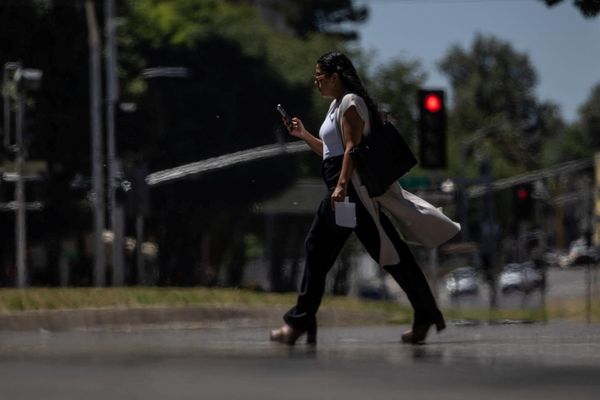A crimson glow lit up the dark sky in parts of Ladakh in a rare stable auroral red arc event at the Hanle Dark Sky Reserve in the high Himalayas due to the strong solar magnetic storms launched towards Earth.
The solar storms or coronal mass ejections are from the AR13664 region of the sun that has produced several high energy solar flares, some of which are travelling towards Earth at a speed of 800 km/s, scientists at the Centre of Excellence in Space Sciences in India (CESSI), Kolkata, said.
Spectacular auroras or northern lights lit up the skies in the higher latitudes of the northern hemisphere as skywatchers from Austria, Germany, Slovakia, Switzerland, Denmark and Poland shared pictures and short videos of the dancing lights on social media.
In Ladakh, astronomers at the Hanle Dark Sky Reserve saw a red glow on the northwest horizon in the sky from about 1 am on May 11 that continued till early dawn.
"We were fortunate to witness Aurora activities on our all-sky camera during regular telescope observations," Stanzin Norla, an engineer at the Hanle Dark Sky Reserve, told PTI.
He said a faint red glow was visible to the naked eye along the horizon and the event was captured in much detail by a DSLR camera installed at the Hanle Dark Sky Reserve.
"It streaked through the sky from about 1 am till 3:30 am," Stanzin said, adding that the skies turned red along the horizon and to a pinkish hue later.
Dorje Angchuk, an engineer at the Indian Astronomical Observatory in Hanle, described the event as a stable auroral red arc, which was a rare occurrence over the skies at Ladakh.
“Auroras seen near the north or south poles are dynamic events. They keep changing. But the one witnessed at Ladakh was more stable. It is called the stable auroral red arc. The steady glow remained in the sky for a couple of hours”, Angchuk said.
Such events are rare at Hanle because it is located far south, Dibyendu Nandi, Head, CESSI at the Indian Institute of Science Education and Research Kolkata, told PTI.
He said the chances of such events being witnessed at places such as Hanle become higher during intense disturbances triggered by solar storms.
"These auroral red arcs are likely caused by heating of the atmosphere by electric currents that are circulating between Earth and outer space," Mr. Nandi said.
“These ring currents get enhanced during geomagnetic disturbances induced by solar storms and thus the likelihood of observing the red auroral arcs is higher at times when we are in the midst of a severe geomagnetic storm”, he said.
The CESSI said the sun produced strong solar flares beginning on May 8, resulting in five outbursts of plasma capable of disrupting satellites in orbit and power grids here on Earth.
"We are witnessing severe Space Weather at levels we have not seen in the last two decades. It might get worse as more solar storms are expected to impact Earth or maybe just more spectacular auroras for all," Mr. Nandi said.
The U.S.' National Oceanic and Atmospheric Administration (NOAA) is calling this an unusual event, pointing out that the flares seem to be associated with a sunspot that's 16 times the diameter of Earth. An extreme geomagnetic storm in 2003 took out power in Sweden and damaged power transformers in South Africa.







